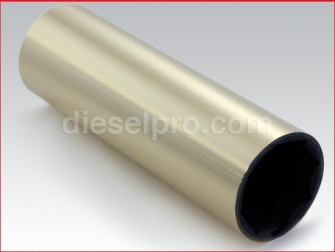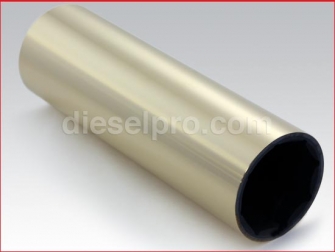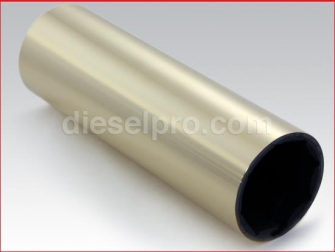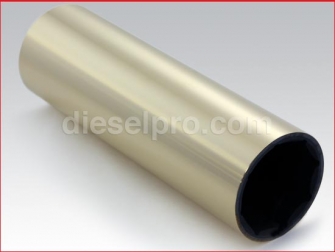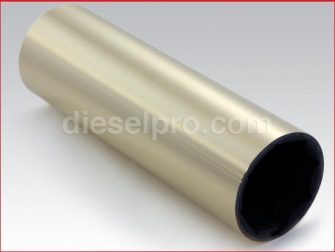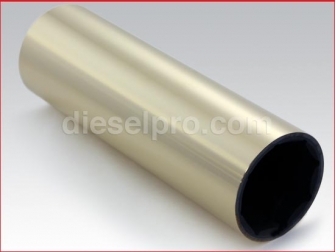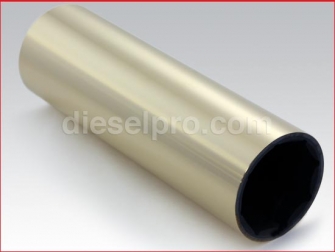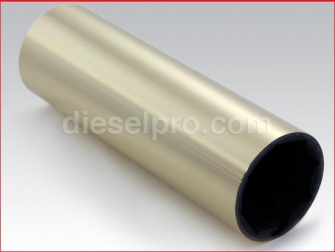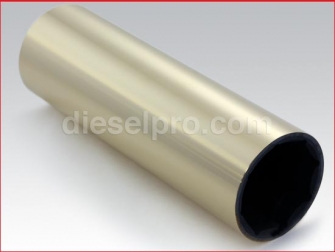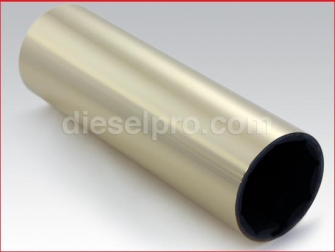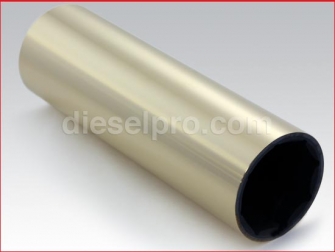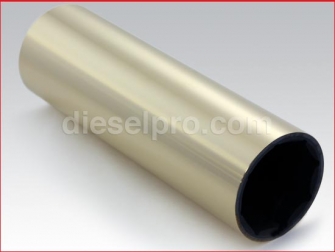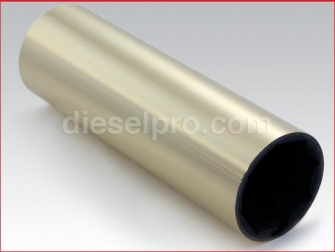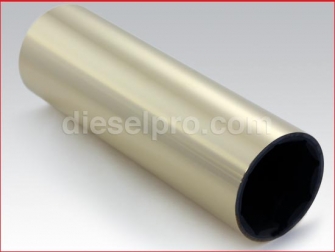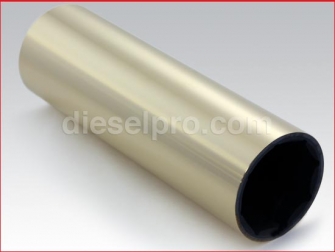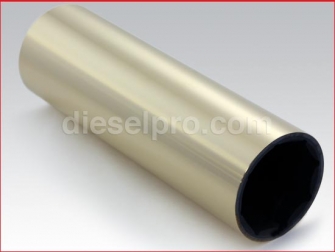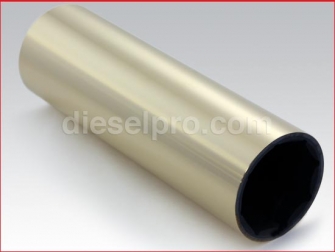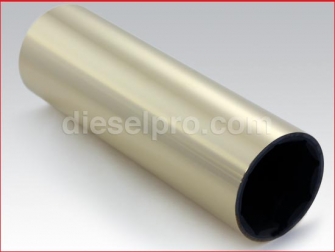Teleflex Morse Marine Boat Throttle Control Parts - Rubber Bearing Section
 Loading...
Loading... -
-
-
-
-
-
-
-
Duramax Marine, 1 1/4 X 1 1/2 X 5 Propeller shaft naval brass bearing
1 1/4 X 1 1/2
.
Price: $ 164.59 -
Duramax Marine 1 1/4 X 1 3/4 X 5 Propeller shaft naval brass bearing
1 1/4 X 1 3/4
.
Price: $ 184.36 -
-
Duramax Marine 1 1/4 X 2 1/8 X 5 Propeller shaft naval brass bearing
1 1/4 X 2 1/8
.
Price: $ 180.07 -
-
-
Duramax Marine, 1 1/2 X 2 3/8 X 6 Propeller shaft naval brass bearing
1 1/2 X 2 3/8
.
Price: $ 269.12 -
-
-
-
-
-
-
-
-
-
-
-
-
-
-
-
-
Propeller Shaft Rubber Bearings – Johnson Duramax Naval Brass Sleeve Bearings
Introduction to Propeller Shaft Rubber Bearings
Propeller shaft rubber bearings, also called cutless or sleeve bearings, are the unseen but vital components that keep your vessel’s propulsion system running smoothly. These bearings sit between the rotating propeller shaft and its housing, providing a low-friction, water-lubricated interface. Without them, shafts would grind against the housing, causing excessive wear, noise, and potential failure.
At Diesel Pro Power, we stock a complete line of Johnson Duramax naval brass rubber bearings, trusted worldwide by shipyards, commercial fleets, and private vessel operators. These bearings combine naval brass shells with a resilient rubber lining that is water-cooled and vibration-dampening — making them the global standard for marine shaft support.
But the most important question operators face is:
“How do I know which rubber bearing is the correct size for my shaft and housing?”
How to Determine the Correct Bearing Size
Selecting the right bearing is more than picking one that “looks about right.” It requires accurate measurement and understanding of your shaft and strut or stern tube. Here’s how to do it step by step:
1. Measure the Shaft Diameter (ID)
-
The inside diameter (ID) of the bearing must match your propeller shaft exactly.
-
Example: If your shaft measures 1 1/4 inches, you’ll need a bearing with a 1 1/4-inch ID.
-
If the bearing ID is too small, the shaft won’t turn freely. Too large, and you’ll get shaft whip, noise, and premature wear.
2. Measure the Housing or Strut Bore (OD)
-
The outside diameter (OD) of the bearing must match the bore of the strut or stern tube where the bearing will be pressed in.
-
Example: If your strut bore measures 2 inches, the bearing OD must also be 2 inches.
-
A loose fit allows movement; too tight, and installation can damage the bearing.
3. Account for Bearing Length
-
The length determines shaft stability and contact surface.
-
Shorter bearings are common in smaller vessels for agility.
-
Longer bearings give more support in larger vessels, improving load handling.
4. Confirm With Manufacturer Specifications
-
Many engine or vessel manuals recommend bearing dimensions. Always cross-check your measurements with OEM or Johnson Duramax charts.
5. Consider Vessel Operating Conditions
-
High-speed yachts → prioritize precision and low resistance.
-
Fishing trawlers → choose longer bearings for heavy hauling stability.
-
Tugboats and workboats → larger bearings with more surface area for heavy continuous operation.
Common Pitfalls to Avoid
-
Guessing shaft size instead of measuring. Even a 1/16-inch error leads to vibration.
-
Ignoring housing bore size. Both shaft and housing must be measured.
-
Not using precision tools. Always measure with calipers, not tape measures.
-
Forgetting water flow. Bearings rely on water grooves to cool and lubricate. Poor water flow shortens their life dramatically.
-
Confusing metric with imperial. Some vessels use millimeters; mixing systems causes ordering mistakes.
Practical Examples by Bearing Size
Here’s how different Johnson Duramax rubber bearing sizes are commonly applied in real-world marine environments:
-
3/4 X 1 1/4 X 3 – Small sailboats or light-duty pleasure craft.
-
1 1/4 X 1 3/4 X 5 – Mid-size yachts and utility boats needing stability under moderate loads.
-
2 X 3 X 8 – Coastal fishing vessels, ferries, and passenger craft with medium propeller loads.
-
3 1/2 X 4 1/4 X 14 – Tugboats and offshore supply vessels handling heavy continuous thrust.
-
5 3/4 X 7 X 23 – Large industrial and commercial ships with massive shafts requiring maximum support.
Installation and Maintenance Tips
-
Press Fit or Freeze Fit: Bearings are typically pressed or chilled with dry ice before insertion.
-
Check Shaft Alignment: Misaligned shafts destroy bearings quickly.
-
Inspect Regularly: Look for vibration, noise, or looseness.
-
Replace on Schedule: Most bearings last 5–7 years depending on vessel usage.
Why Choose Diesel Pro Power for Rubber Bearings
-
40,000+ satisfied customers worldwide
-
Fast global shipping — most bearings ship within 24 hours
-
Expert fitment verification before shipping
-
Extensive catalog covering all shaft sizes, from small craft to large commercial vessels
-
Trusted Johnson Duramax bearings known for durability and performance



 Free US Calls: 1-888-433-4735
Free US Calls: 1-888-433-4735 International: 305-545-5588
International: 305-545-5588






